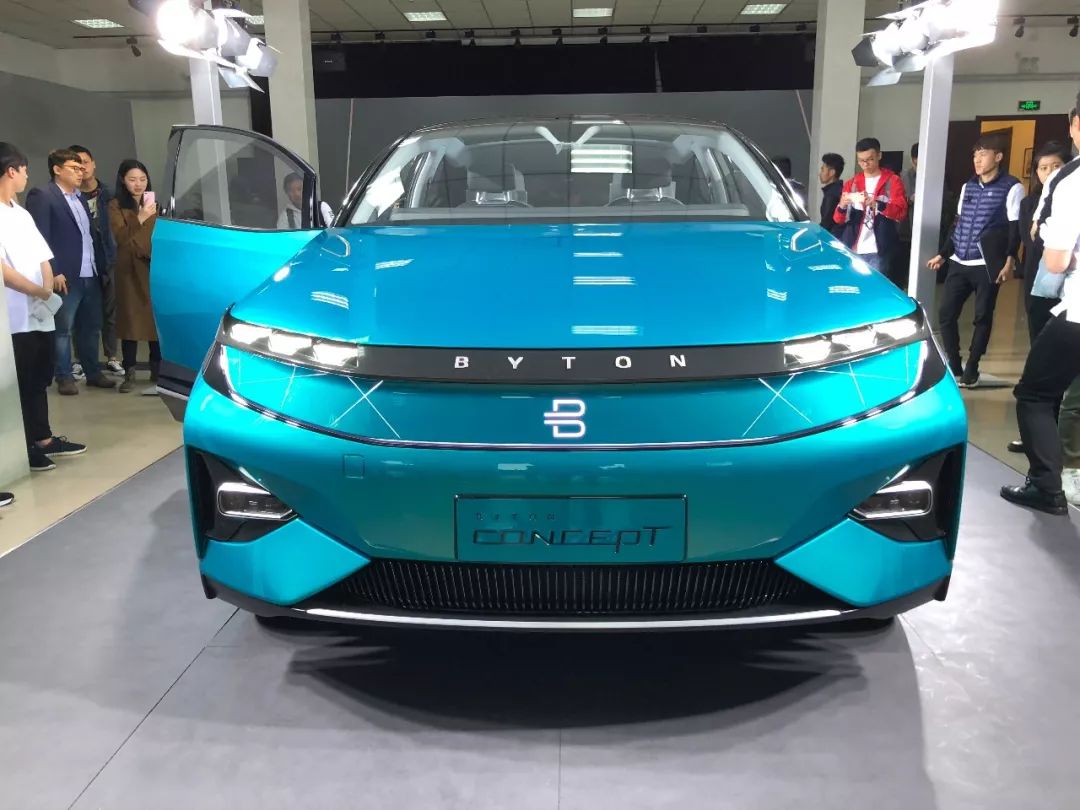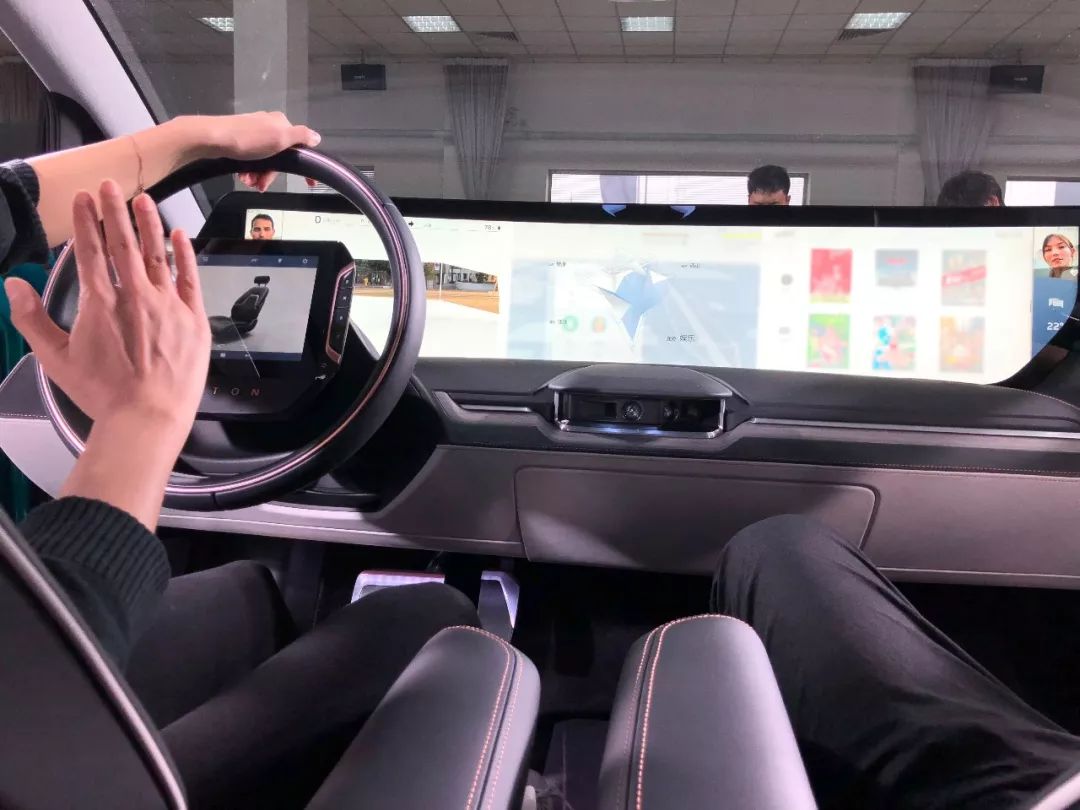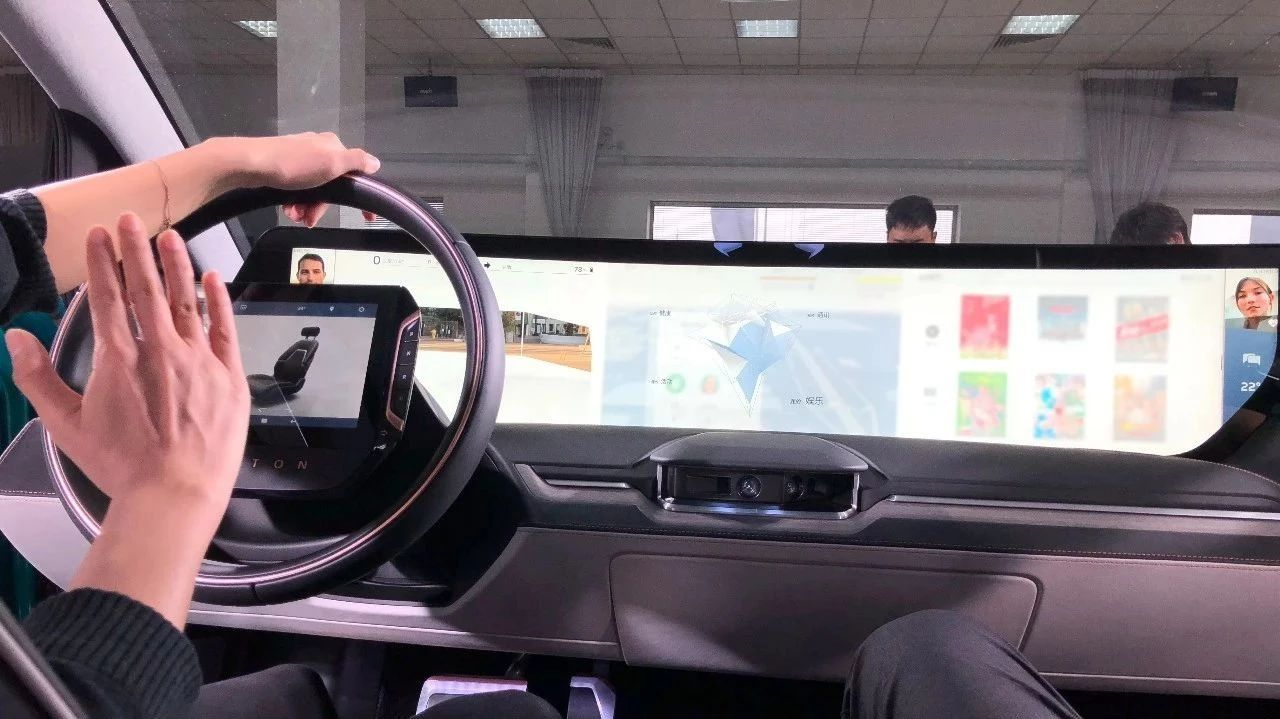First was CES, and then the Beijing Auto Show. Each appearance of the BYTON Concept from Byton always generates a lot of discussion.
This car is too strong of a topic, with its 49-inch center screen, Driver Tablet touch screen, facial and gesture recognition, and wooden flooring…
Plus, there’s the eye-catching exterior design.



We posted a video of the large screen interaction experience on a video platform, and in a very short time, it had over 200,000 views. The majority of comments were curious and confused about the large screen.
-
Does the large screen affect your line of sight?
-
How is the safety airbag installed?
-
Will the screen’s brightness distract drivers driving at night?
-
How can you discern the position of the steering wheel when turning?
-
Will the accuracy of voice and gesture interaction be insufficient?
These are the five major issues from the large screen. Currently, the experience feedback is as follows:
-
The position of the center console is lower, and the screen is close to the windshield, with no visual obstruction.
-
The safety airbag is located underneath the BYTON logo on the steering wheel.
-
The brightness can be adjusted, but it still needs more testing during actual driving.
-
The last two issues have been reported to Byton.
However, every friend who has seen the real BYTON prototype admits that this is the best one completed by a new car company.
But beyond the product details, what we are more concerned about is Bi Fukang and David Twohig, two German executives who founded a new car company that is deeply rooted in the Chinese market. Can this really become successful?
Below is the clarification from Byton’s CEO, David Twohig. Enjoy.
Talking about Financing
Regarding financing, Li Bin and Shen Hui’s opinion is that the car manufacturing threshold is at 20 billion RMB, while He XPeng believes it is still “far from enough.” Li Xiang from CHEJIA accumulated 5.755 billion in funding and says “our cash reserve is very sufficient.” Obviously, everyone has different opinions. Below is David Twohig’s perspective.”Spending one or two hundred billion is not the most important thing, as building cars definitely requires a high financial threshold that cannot be achieved with limited funds. The biggest difference between startups and traditional companies is that startups must consider how to spend money carefully, ensuring that we have enough funds to support our development. This is a very practical problem.
Furthermore, we must distinguish between investing in an entry-level or mid-range product and investing in a high-end product. For example, how much does it cost to make a BMW from conception to mass production?
Our team is very clear on this, so if someone spends one hundred, I may only need to spend seventy, which means success. It is important for startups to spend money reasonably and have a sense of thrift.
For instance, in Byton, we control our research and development costs through rigorous budget management. For example, our mid and large SUVs typically weigh 2.1 tons. If we want to achieve a range of 520 kilometers for the high-end version and 400 kilometers for the entry-level, we must reduce weight. That’s why we put a lot of effort into the vehicle body material selection.
(Byton Concept) we use steel for 80% of the car body and aluminum for 20%, which allows us to achieve the best balance between cost and performance. There are many similar examples.
Moreover, for new energy vehicles, not everything needs to be newly developed because there are many mature technologies available that we can use to save costs reasonably. However, there are areas where we need to invest in new research and development, such as the comprehensive shared screen (that 49-inch one…) and driver touch screen, which are necessary.
The supply chain layout of Byton is already basically completed, and we have great confidence in our products and can achieve such a price positioning.”
Policy Discussion
The reduction of tariffs and the opening up of shareholding ratios in the Chinese automotive industry have almost been confirmed. Naturally, Tesla, which has long-term cash flow tied up and has been negotiating with local governments in China to build factories, is the biggest beneficiary of this policy. The faster Tesla enters, the greater the pressure on its competitors, especially these new car-making groups that have not yet reached a certain scale.
Regarding the opening up of shareholding ratios, I believe that Chinese brands do not need to fear any international competition, because many Chinese brands have already caught up with international standards, such as in autonomous driving, vehicle networking technology, and many other fields. Thus, I think that opening up is a good thing.For BYTON, we have been in communication with the National Development and Reform Commission and the Ministry of Industry and Information Technology, and they have given us recognition for our products. This is because we have our own core technologies, industrial chains and layouts, and most importantly, we are a start-up company rooted in China. In addition, we have done a lot of preparation work for our qualification application, and we will start producing the first batch of sample cars in April. I believe that we can achieve our mass production according to schedule.
Talking about Products
To be frank, a 49-inch central control screen cannot even be called a central control, and what is the product logic behind a 49-inch screen in a car?
“Why do we insist on making such a large shared comprehensive screen? Let me give you a few examples.
I believe that nowadays, traditional car navigation systems are not often used because they are not as convenient and accurate as using smartphones. However, the smartphone screen is too small, even if placed in the middle, it is not clear to see, and the operation is also unsafe because you have to look at the phone. Therefore, we have placed a very perfect 3D map on the shared comprehensive screen. The driver can use touch on the screen to enter the destination, which is definitely the most convenient.
In addition, I want to explain our design concept for the shared comprehensive screen, which is safety and ease of use. In the context of future unmanned driving, the value of the shared comprehensive screen will be realized. I believe this definitely represents the future, but I don’t think everyone needs to misunderstand this trend. A single large screen is not meaningful, intelligent content and interaction are the most important.”
The problem is not over yet. The BYTON Concept also has two screens for the rear passengers to use. The size and specifications are not small. Is it assuming that there will be screen overcapacity in the consumer electronics industry in the next few years?
“The reason why the market’s rear seat screen usage rate is low is that there is no design that can be accepted by everyone, giving users a good sense of experience. Like I said earlier, it is very easy to simply install a screen for the rear seat. The difficulty lies in creating value for this screen. With the advent of the sharing era, the demand for rear seat screens will become higher and higher. We will definitely choose a route to give this screen more value.”
Talking about FAW
On April 20, FAW signed a framework cooperation agreement with BYTON for B-round strategic investment. This is also the first time that a state-owned car company has invested in and cooperated with a new car company.
“I think this is a very good thing for BYTON. They participated in our B-round financing and fully accepted our development model and philosophy as a start-up company. We are proud of this. In addition, FAW has a lot of resonance with us, which is very important. Having a common language, common values, common ideas, and mutual respect to do something together will definitely result in a 1+1>2 outcome. I believe there is a lot of room for imagination in the cooperation between the two parties, and we will cooperate in research and development, marketing, and other aspects, but it will not affect our own development plan.”
Talking about Product PlanningNIO and WM Motor both adopt the long-term running model of launching a new car every year. They currently have two products, a 7-seat full-size SUV and a 2B car model for the ride-hailing scenario. What about BYTON?
BYTON’s first car model will be launched in the second half of next year. We have already started manufacturing the first batch of prototype cars at our factory in Nanjing. In addition, the trial workshop at the Nanjing factory has been completed, and there will be a big change expected in September or October this year.
Also, BYTON will release its second concept car, a sedan competing with Tesla Model S or BMW 5 Series, at CES Asia in June. We will begin to apply L4 autonomous driving technology when the second concept car is in mass production, and it is estimated to be in 2021.
The third car is a highly anticipated 7-seat MPV, which is probably the closest to Toyota’s Alphard. The car is very comfortable for family use, and the current plan is to launch it in 2022.
Talking about sales, Tesla has led the direct sales model in the automotive industry. From the public’s feedback, the praise received by NIO House may be more than that of NIO ES8 itself. Of course, there is also WM Motor’s so-called “Intelligent Partnership” route. From Dai Lei’s statement, it can also be said that on the sales level, BYTON is similar to WM Motor and NIO.
“For the sales model, firstly, we will definitely have a direct sales model in the future, because many people will be willing to order or buy cars online in the future. However, I think we still need offline experience stores because experience is the customer’s basic need. Therefore, we will have our first experience store in Shanghai.
After Shanghai, we will seek partners in other cities because local sales understand the local market and can provide better services. They have the most experience in cost control and management, but we must choose the best approach for partners. However, this partnership model is definitely not an innovative model of traditional 4S stores. It is an innovative partnership model.”
Talking about entrepreneurship, this is the question at the beginning of the article. Two German executives founded a new car company that targets the Chinese market. Can this fact become a reality?
“The entrepreneurial environment in China is much better than that in the United States, but the competition will also be more intense, so it won’t be easy. To be honest, because Dr. Carsten Breitfeld and I are both Germans, the German government also asked us why we put the project in China and why not in Germany? The United States also asked us this question.”Actually, there are several reasons for it. The first is the market. China is currently the world’s largest market for new energy vehicles, accounting for over 50% of the global market share and is expected to continue growing. The second reason is the strong support from the Chinese government, which is essential for the development of new energy vehicles. Thirdly, Chinese investors are willing to take on this risk in the capital market. Fourthly, China’s technological innovation has also reached a very high level. For example, in the field of AI, several companies are already doing very well, and they can compete with Silicon Valley in the US.
Tesla is indeed very successful, and they have created a fantastic brand. But to be honest, I think they have made a mistake by not (seriously) tapping into the largest high-end market in the world, China.
After the interview, my deepest impression of Dieter is how thoroughly he has embraced Chinese culture. For example, his attitude toward capital and spending is to be frugal. He also believes in proactive communication regarding policies and leveraging policies to support development. At times, I even forget that I am sitting across from a German entrepreneur—it feels like I’m with a local entrepreneur such as Li Bin or Shen Hui.
Of course, having coherent logic is one thing, and efficient, distortion-free execution and market feedback are another. We are looking forward to next year when Byton joins the battle of the old and new automobile forces.


This article is a translation by ChatGPT of a Chinese report from 42HOW. If you have any questions about it, please email bd@42how.com.
